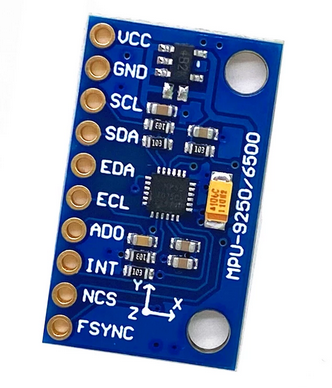
Difference: MagicWandOld (1 vs. 12)
Revision 122022-06-25 - UliRaich
| Line: 1 to 1 | ||||||||
|---|---|---|---|---|---|---|---|---|
The Magic Wand ExampleIntroduction | ||||||||
| Line: 6 to 6 | ||||||||
The magic wand example shows how to detect gestures using an accelerometer. Different types of accelerometers are easily available:
| ||||||||
| Changed: | ||||||||
| < < |
| |||||||
| > > |
| |||||||
The MPU6050 and the MPU9250 gave hardware offset registers which allow calibrating the device. When the device is horizontally mounted and stationary (not moving) we expect the values:
| ||||||||
Revision 112022-06-08 - UliRaich
| Line: 1 to 1 | ||||||||
|---|---|---|---|---|---|---|---|---|
The Magic Wand ExampleIntroduction | ||||||||
| Line: 7 to 7 | ||||||||
| ||||||||
| Added: | ||||||||
| > > | The MPU6050 and the MPU9250 gave hardware offset registers which allow calibrating the device. When the device is horizontally mounted and stationary (not moving) we expect the values:
http://www.digikey.com/en/pdf/i/invensense/mpu-hardware-offset-registers | |||||||
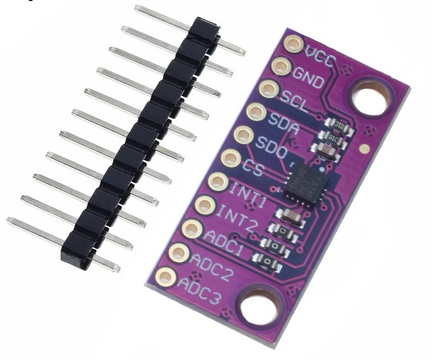
Hardware | ||||||||
Revision 102022-06-06 - UliRaich
| Line: 1 to 1 | ||||||||
|---|---|---|---|---|---|---|---|---|
The Magic Wand ExampleIntroduction | ||||||||
| Line: 6 to 6 | ||||||||
The magic wand example shows how to detect gestures using an accelerometer. Different types of accelerometers are easily available:
| ||||||||
| Changed: | ||||||||
| < < |
| |||||||
| > > |
| |||||||

Hardware | ||||||||
Revision 92022-05-19 - UliRaich
| Line: 1 to 1 | ||||||||||||||||||||||||||||||||||||||||||||||
|---|---|---|---|---|---|---|---|---|---|---|---|---|---|---|---|---|---|---|---|---|---|---|---|---|---|---|---|---|---|---|---|---|---|---|---|---|---|---|---|---|---|---|---|---|---|---|
The Magic Wand ExampleIntroductionThe magic wand example shows how to detect gestures using an accelerometer. Different types of accelerometers are easily available:
| ||||||||||||||||||||||||||||||||||||||||||||||
| Changed: | ||||||||||||||||||||||||||||||||||||||||||||||
| < < |
| |||||||||||||||||||||||||||||||||||||||||||||
| > > |
| |||||||||||||||||||||||||||||||||||||||||||||

Hardware | ||||||||||||||||||||||||||||||||||||||||||||||
| Line: 24 to 25 | ||||||||||||||||||||||||||||||||||||||||||||||
| ||||||||||||||||||||||||||||||||||||||||||||||
| Added: | ||||||||||||||||||||||||||||||||||||||||||||||
| > > | The connections of the MPU92/63 are similar
| |||||||||||||||||||||||||||||||||||||||||||||
The ADXL345 is connected as follows:
| ||||||||||||||||||||||||||||||||||||||||||||||
| Line: 61 to 74 | ||||||||||||||||||||||||||||||||||||||||||||||
| ||||||||||||||||||||||||||||||||||||||||||||||
| Added: | ||||||||||||||||||||||||||||||||||||||||||||||
| > > |
| |||||||||||||||||||||||||||||||||||||||||||||
Revision 82022-03-22 - UliRaich
| Line: 1 to 1 | |||||||||||||
|---|---|---|---|---|---|---|---|---|---|---|---|---|---|
The Magic Wand ExampleIntroduction | |||||||||||||
| Line: 33 to 33 | |||||||||||||
| |||||||||||||
| Changed: | |||||||||||||
| < < | While the MPU6050 and the ADXL345 use the I2C bus, I connected the LIS3DH to be used with the Serial Peripheral Interface (SPI) as follows: | ||||||||||||
| > > | While the MPU6050 and the ADXL345 use the I2C bus, I connected the LIS3DH to be used with the Serial Peripheral Interface (SPI) or I2C as follows: | ||||||||||||
| |||||||||||||
| Line: 46 to 46 | |||||||||||||
| |||||||||||||
| Changed: | |||||||||||||
| < < | |||||||||||||
| > > | Remark: The LISDH breakout board has 3 SMD jumpers marked "0" on the photo above. These tie ADC channel zero and two to GND and channel one to Vcc. These jumpers must be removed if you want to use the ADC. The ADC however is of limited use as it only works in a range of ~ 800mV to 1.6V. | ||||||||||||
Providing a training data set | |||||||||||||
| Changed: | |||||||||||||
| < < | In order to provide a training data set we must be able to record gestures. We must therefore provide a program that recognizes the start and the end of a gesture (movement and inactivity detection) and which records the accelerometer data of the gesture onto a file. Gesture detection is of course also needed to be able to feed the accelerometer data into the trained model, which will then recognize the gesture. | ||||||||||||
| > > | In order to provide a training data set, we must be able to record gestures. We must therefore provide a program that recognizes the start and the end of a gesture (movement and inactivity detection) and which records the accelerometer data of the gesture onto a file. Gesture detection is of course also needed to be able to feed the accelerometer data into the trained model, which will then recognize the gesture. | ||||||||||||
|
-- | |||||||||||||
Revision 72022-03-16 - UliRaich
| Line: 1 to 1 | |||||||||||||||||||||||||||||||||||||||||||||||||
|---|---|---|---|---|---|---|---|---|---|---|---|---|---|---|---|---|---|---|---|---|---|---|---|---|---|---|---|---|---|---|---|---|---|---|---|---|---|---|---|---|---|---|---|---|---|---|---|---|---|
The Magic Wand ExampleIntroduction | |||||||||||||||||||||||||||||||||||||||||||||||||
| Line: 6 to 6 | |||||||||||||||||||||||||||||||||||||||||||||||||
The magic wand example shows how to detect gestures using an accelerometer. Different types of accelerometers are easily available:
| |||||||||||||||||||||||||||||||||||||||||||||||||
| Changed: | |||||||||||||||||||||||||||||||||||||||||||||||||
| < < |
| ||||||||||||||||||||||||||||||||||||||||||||||||
| > > |
| ||||||||||||||||||||||||||||||||||||||||||||||||
 | |||||||||||||||||||||||||||||||||||||||||||||||||
| Added: | |||||||||||||||||||||||||||||||||||||||||||||||||
| > > | Hardware | ||||||||||||||||||||||||||||||||||||||||||||||||
| I mounted the accelerometer onto a WeMos D1 prototype board. With the triple base and the CPU this makes up for a stable assembly that can easily be moved without cable contact problems. | |||||||||||||||||||||||||||||||||||||||||||||||||
| Line: 32 to 33 | |||||||||||||||||||||||||||||||||||||||||||||||||
| |||||||||||||||||||||||||||||||||||||||||||||||||
| Added: | |||||||||||||||||||||||||||||||||||||||||||||||||
| > > | While the MPU6050 and the ADXL345 use the I2C bus, I connected the LIS3DH to be used with the Serial Peripheral Interface (SPI) as follows:
| ||||||||||||||||||||||||||||||||||||||||||||||||
Providing a training data setIn order to provide a training data set we must be able to record gestures. We must therefore provide a program that recognizes the start and the end of a gesture (movement and inactivity detection) and which records the accelerometer data of the gesture onto a file. Gesture detection is of course also needed to be able to feed the accelerometer data into the trained model, which will then recognize the gesture. | |||||||||||||||||||||||||||||||||||||||||||||||||
Revision 62022-02-21 - UliRaich
| Line: 1 to 1 | ||||||||
|---|---|---|---|---|---|---|---|---|
The Magic Wand ExampleIntroductionThe magic wand example shows how to detect gestures using an accelerometer. Different types of accelerometers are easily available: | ||||||||
| Changed: | ||||||||
| < < |
| |||||||
| > > |
| |||||||
 | ||||||||
| Line: 34 to 34 | ||||||||
Providing a training data set | ||||||||
| Changed: | ||||||||
| < < | In order to provide a training data set we must be able to record gestures. Therefore a driver for the accelerometer is needed as well as a program that recognizes movement and writes the accelerometer data on a file. | |||||||
| > > | In order to provide a training data set we must be able to record gestures. We must therefore provide a program that recognizes the start and the end of a gesture (movement and inactivity detection) and which records the accelerometer data of the gesture onto a file. Gesture detection is of course also needed to be able to feed the accelerometer data into the trained model, which will then recognize the gesture. | |||||||
|
-- | ||||||||
Revision 52022-02-14 - UliRaich
| Line: 1 to 1 | ||||||||||||||||||||||
|---|---|---|---|---|---|---|---|---|---|---|---|---|---|---|---|---|---|---|---|---|---|---|
The Magic Wand ExampleIntroduction | ||||||||||||||||||||||
| Line: 7 to 7 | ||||||||||||||||||||||
| ||||||||||||||||||||||
| Added: | ||||||||||||||||||||||
| > > |  | |||||||||||||||||||||
I mounted the accelerometer onto a WeMos D1 prototype board. With the triple base and the CPU this makes up for a stable assembly that can easily be moved without cable contact problems.
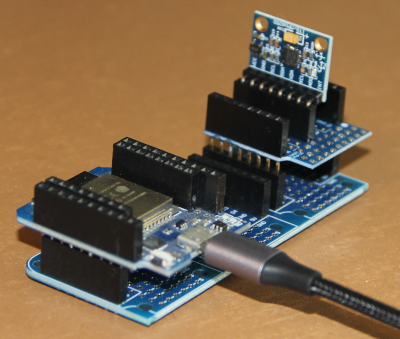
Hardware connectionsThe MPU6050 is connected to the WeMos D1 bus as follows: | ||||||||||||||||||||||
| Changed: | ||||||||||||||||||||||
| < < |
| |||||||||||||||||||||
| > > |
| |||||||||||||||||||||
| ||||||||||||||||||||||
| Added: | ||||||||||||||||||||||
| > > |
The ADXL345 is connected as follows:
| |||||||||||||||||||||
Providing a training data setIn order to provide a training data set we must be able to record gestures. Therefore a driver for the accelerometer is needed as well as a program that recognizes movement and writes the accelerometer data on a file. | ||||||||||||||||||||||
| Line: 31 to 43 | ||||||||||||||||||||||
| ||||||||||||||||||||||
| Changed: | ||||||||||||||||||||||
| < < |
| |||||||||||||||||||||
| > > |
| |||||||||||||||||||||
| ||||||||||||||||||||||
Revision 42022-02-07 - UliRaich
| Line: 1 to 1 | |||||||||||||||||||
|---|---|---|---|---|---|---|---|---|---|---|---|---|---|---|---|---|---|---|---|
The Magic Wand ExampleIntroduction | |||||||||||||||||||
| Line: 7 to 7 | |||||||||||||||||||
| |||||||||||||||||||
| Changed: | |||||||||||||||||||
| < < | I mounted the accelerometer onto a WeMos D1 prototype board. With the triple base and the CPU this makes up for a stable assemble that can easily be moved with cable contact problems. | ||||||||||||||||||
| > > | I mounted the accelerometer onto a WeMos D1 prototype board. With the triple base and the CPU this makes up for a stable assembly that can easily be moved without cable contact problems. | ||||||||||||||||||
 | |||||||||||||||||||
| Added: | |||||||||||||||||||
| > > | Hardware connectionsThe MPU6050 is connected to the WeMos D1 bus as follows:
| ||||||||||||||||||
Providing a training data setIn order to provide a training data set we must be able to record gestures. Therefore a driver for the accelerometer is needed as well as a program that recognizes movement and writes the accelerometer data on a file. | |||||||||||||||||||
Revision 32022-02-04 - UliRaich
| Line: 1 to 1 | |||||||||
|---|---|---|---|---|---|---|---|---|---|
The Magic Wand ExampleIntroductionThe magic wand example shows how to detect gestures using an accelerometer. Different types of accelerometers are easily available: | |||||||||
| Changed: | |||||||||
| < < |
| ||||||||
| > > |

Providing a training data setIn order to provide a training data set we must be able to record gestures. Therefore a driver for the accelerometer is needed as well as a program that recognizes movement and writes the accelerometer data on a file. | ||||||||
-- Comments | |||||||||
| Added: | |||||||||
| > > |
| ||||||||
Revision 22022-02-03 - UliRaich
| Line: 1 to 1 | ||||||||
|---|---|---|---|---|---|---|---|---|
The Magic Wand ExampleIntroduction | ||||||||
| Changed: | ||||||||
| < < | The magic wand example shows how to detect gestures using an accelerometer. Article text. | |||||||
| > > | The magic wand example shows how to detect gestures using an accelerometer. Different types of accelerometers are easily available:
| |||||||
-- Comments | ||||||||
Revision 12022-02-02 - UliRaich
| Line: 1 to 1 | ||||||||
|---|---|---|---|---|---|---|---|---|
| Added: | ||||||||
| > > |
The Magic Wand ExampleIntroductionThe magic wand example shows how to detect gestures using an accelerometer. Article text. --Comments | |||||||
View topic | History: r12 < r11 < r10 < r9 | More topic actions...
Ideas, requests, problems regarding TWiki? Send feedback
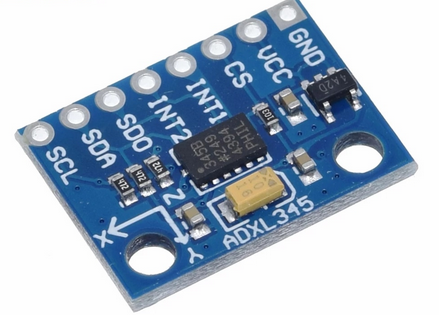
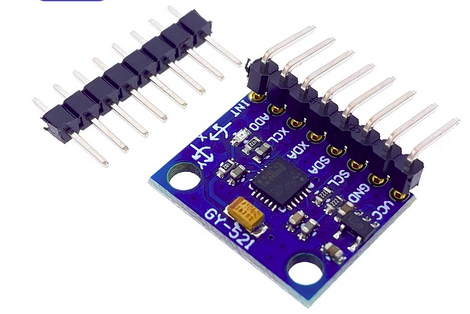 .
.